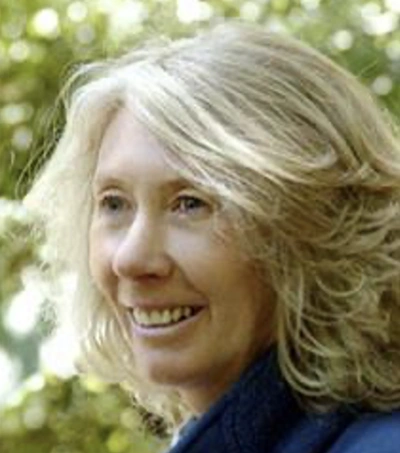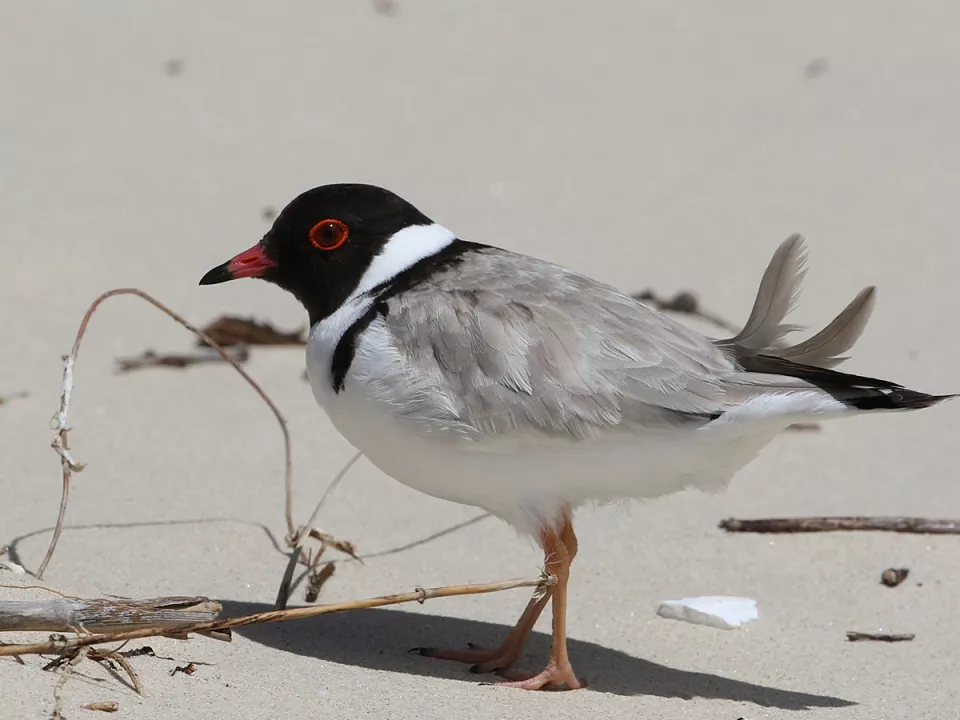Nature's Protection: Heart connection is the key
It's very helpful to have the science, and to have the good economic arguments and all of the rationale very clear in your mind, but it's not what wins. It's not what's needed to win - and that realisation came fairly late in life for me.
I was working in the Federal Treasury, and then later running my own business. It really only was when my back yard (Durras Lake and Murramarang National Park) came under threat, and the science didn't win it, and rationality didn't win it, and I thought, ‘oh my shivers, how does the world actually work?’ that I decided to do a campaign training course run by the Total Environment Centre in New South Wales.
Another local and I both working to save the last unspoiled lake of its kind in NSW and improve the viability of the national park, took ourselves off to Sydney, to go and learn how to do environmental campaigning. it was a really good short course. We learned about the need to think outside the box and be creative, to plan ahead, and have a more comprehensive approach to what we were doing if we really wanted to win. The course also provided a crash course in media including training for TV and radio interviews.
One of the stories told at the course was about the creation of the Blue Mountains National Park where The Blue Gum Forest, now an iconic part of the Blue Mountains World Heritage Area, was the first area saved by a community campaign and by raising money to buy it. The core of the Blue Mountains National Park was purchased by a group of bushwalkers and others, who raised funds in Sydney during the Depression to buy that land.
Leonie Horweg and I were sitting on the plane coming back and said “well that's really what we need to do isn't it? We should just buy the land under threat of development, and then we give it to Parks and that'll be that. So let's start a fundraising campaign, and we'll buy it and we'll give it to National Parks, and obviously we'll need some media so let's see if we can get the magazine with the most readers in Australia, the Australian Women's Weekly to cover the story.”
“We secured a full page colour story in the Women's Weekly – which boosted our confidence that we could raise the money and build political support for the campaign. It was a long campaign but we overcame every set back and secured permanent protection for Durras Lake and in several stages expanded the national park to around 11,000 hectares from the initial 1300 hectares. The campaign was a profound learning experience. It gave me a deeper understanding of the challenges facing conservation and of how to influence decision makers. Most importantly I learned that when competing with big business, nothing actually gets saved unless the community fights for it.
There's not a National Park in Australia that hasn't been underpinned by someone's love of it - yes, they've got biological significance, they have all sorts of scientific values, they're really important for species - you can list all the science rationale, but the trigger point for action was that someone, or a group of people, cared.
Malcolm Fraser stopped sand mining on Fraser Island. Why? Because his daughter picked up the campaign. He ended whaling in Australia because children were opposed to it. There's this heart connection - yes, the science was there with whaling, the science was there with Fraser Island, it's globally unique, it’s now World Heritage listed. But it needed more than that, it needed a massive community campaign, it needed people being taken on tours into the forest to make a direct personal connection. So too did every natural world heritage site in Australia – from the wet tropical rainforests in Queensland to the Tasmanian Wilderness World Heritage Area, Kakadu National Park, the Great Barrier Reef and Ningaloo.
These are all hard-won, globally unique areas. The battle to protect the integrity of some of them is still underway. It took twenty-five years of battling to get the globally unique tall eucalypt forests into the Tasmanian Wilderness World Heritage area. That would never have happened without the community persistently calling for their protection, and some clever footwork from Alec keeping the agenda alive for twenty-five years. But still the job is not finished. The adjoining rainforests of Takayna are yet to be protected from logging and mining and added to the World Heritage Area.
It is what I've learned that has kept me involved. For me, it's been a constant story of learning how interdependent we are, the sense of wonder that comes with understanding the natural world better. Learning has given me a profound sense of responsibility to do all I can to protect and restore the natural world and help in the fight against climate change. I'm in a privileged position to understand the interaction between climate change and biodiversity loss, and to do something, even if it's only very small, about it.
While ever I've got the capacity and opportunity to keep working to help people change course, I'll keep going. Not everyone has that opportunity.

Virginia Young
It's very helpful to have the science, and to have the good economic arguments and all of the rationale very clear in your mind, but it's not what wins. It's not what's needed to win - and that realisation came fairly late in life for me.
I was working in the Federal Treasury, and then later running my own business. It really only was when my back yard (Durras Lake and Murramarang National Park) came under threat, and the science didn't win it, and rationality didn't win it, and I thought, ‘oh my shivers, how does the world actually work?’ that I decided to do a campaign training course run by the Total Environment Centre in New South Wales.
Another local and I both working to save the last unspoiled lake of its kind in NSW and improve the viability of the national park, took ourselves off to Sydney, to go and learn how to do environmental campaigning. it was a really good short course. We learned about the need to think outside the box and be creative, to plan ahead, and have a more comprehensive approach to what we were doing if we really wanted to win. The course also provided a crash course in media including training for TV and radio interviews.
One of the stories told at the course was about the creation of the Blue Mountains National Park where The Blue Gum Forest, now an iconic part of the Blue Mountains World Heritage Area, was the first area saved by a community campaign and by raising money to buy it. The core of the Blue Mountains National Park was purchased by a group of bushwalkers and others, who raised funds in Sydney during the Depression to buy that land.
Leonie Horweg and I were sitting on the plane coming back and said “well that's really what we need to do isn't it? We should just buy the land under threat of development, and then we give it to Parks and that'll be that. So let's start a fundraising campaign, and we'll buy it and we'll give it to National Parks, and obviously we'll need some media so let's see if we can get the magazine with the most readers in Australia, the Australian Women's Weekly to cover the story.”
“We secured a full page colour story in the Women's Weekly – which boosted our confidence that we could raise the money and build political support for the campaign. It was a long campaign but we overcame every set back and secured permanent protection for Durras Lake and in several stages expanded the national park to around 11,000 hectares from the initial 1300 hectares. The campaign was a profound learning experience. It gave me a deeper understanding of the challenges facing conservation and of how to influence decision makers. Most importantly I learned that when competing with big business, nothing actually gets saved unless the community fights for it.
There's not a National Park in Australia that hasn't been underpinned by someone's love of it - yes, they've got biological significance, they have all sorts of scientific values, they're really important for species - you can list all the science rationale, but the trigger point for action was that someone, or a group of people, cared.
Malcolm Fraser stopped sand mining on Fraser Island. Why? Because his daughter picked up the campaign. He ended whaling in Australia because children were opposed to it. There's this heart connection - yes, the science was there with whaling, the science was there with Fraser Island, it's globally unique, it’s now World Heritage listed. But it needed more than that, it needed a massive community campaign, it needed people being taken on tours into the forest to make a direct personal connection. So too did every natural world heritage site in Australia – from the wet tropical rainforests in Queensland to the Tasmanian Wilderness World Heritage Area, Kakadu National Park, the Great Barrier Reef and Ningaloo.
These are all hard-won, globally unique areas. The battle to protect the integrity of some of them is still underway. It took twenty-five years of battling to get the globally unique tall eucalypt forests into the Tasmanian Wilderness World Heritage area. That would never have happened without the community persistently calling for their protection, and some clever footwork from Alec keeping the agenda alive for twenty-five years. But still the job is not finished. The adjoining rainforests of Takayna are yet to be protected from logging and mining and added to the World Heritage Area.
It is what I've learned that has kept me involved. For me, it's been a constant story of learning how interdependent we are, the sense of wonder that comes with understanding the natural world better. Learning has given me a profound sense of responsibility to do all I can to protect and restore the natural world and help in the fight against climate change. I'm in a privileged position to understand the interaction between climate change and biodiversity loss, and to do something, even if it's only very small, about it.
While ever I've got the capacity and opportunity to keep working to help people change course, I'll keep going. Not everyone has that opportunity.
You might like...

Protecting Bruny's beach-dwellers

Protecting shorebirds on Bruny Island

Mastering Campaign Strategy: Your Power to Protect Our Planet

A National Park for Bruny Island
Newsletter
Sign up to keep in touch with articles, updates, events or news from Kuno, your platform for nature
